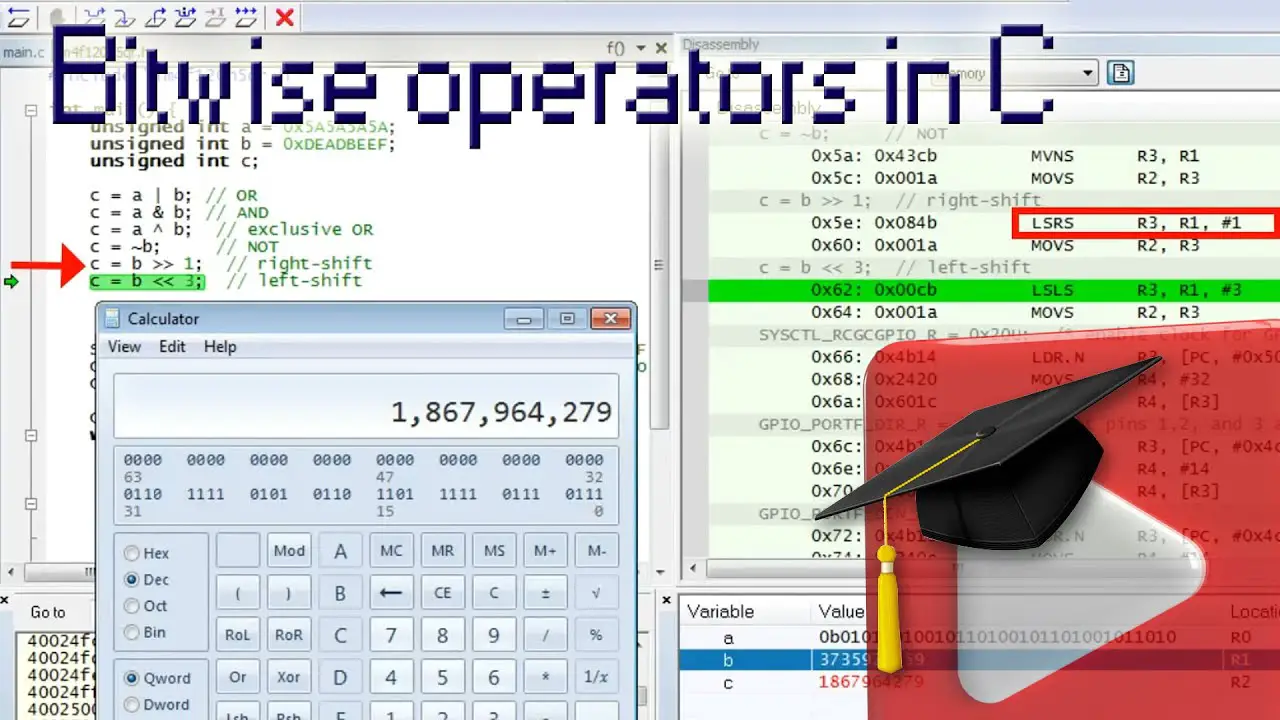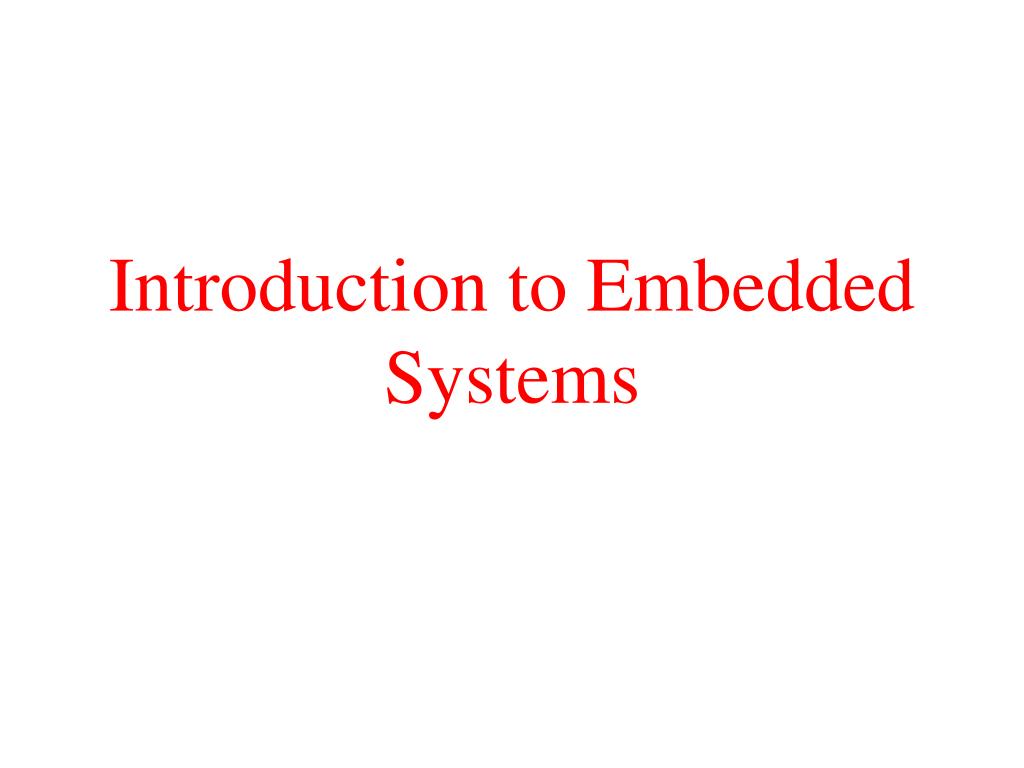Introduction to Embedded Systems Programming

Embedded systems programming is a specialized field of computer science that deals with the design and development of computer systems that are embedded within larger systems. These systems are typically used in devices such as cars, appliances, and medical equipment, and they often have a limited amount of resources, such as memory and processing power.

Embedded systems programming is different from traditional programming in several ways. First, embedded systems are typically very resource-constrained, so programmers must be careful to use resources efficiently. Second, embedded systems often have real-time requirements, meaning that they must respond to events in a timely manner. Third, embedded systems are often used in safety-critical applications, so they must be designed and implemented with a high level of reliability.

Embedded systems programming requires a knowledge of several different disciplines, including computer architecture, operating systems, and software engineering. Programmers must also be familiar with the hardware that the system will be running on.
Embedded systems programming can be a challenging but rewarding field. It offers opportunities to work on a wide variety of projects, and it can be a great way to learn about how computer systems work.
Here are some of the benefits of embedded systems programming:
- It is a rapidly growing field with a lot of job opportunities.
- Embedded systems programmers are in high demand, and they can often earn a high salary.
- Embedded systems programming is a challenging but rewarding field.
- It offers opportunities to work on a wide variety of projects.
- Embedded systems programmers can learn a lot about how computer systems work.
If you are interested in a career in embedded systems programming, there are several steps you can take to get started:
- Get a strong foundation in computer science, including courses in computer architecture, operating systems, and software engineering.
- Learn about the hardware that embedded systems run on.
- Practice writing embedded systems code.
- Get involved in projects that involve embedded systems.
- Network with other embedded systems engineers.
With hard work and dedication, you can become a successful embedded systems programmer.## Introduction To Embedded Systems Programming
Executive Summary
Embedded systems programming involves creating software for devices with limited resources, such as microcontrollers and microprocessors. These systems often have specific functions and operate independently, making them crucial in various industries.
Introduction
Embedded systems programming is a specialized field that combines hardware and software design to create devices with dedicated functionalities. These systems are widely used in industries like automotive, medical, industrial automation, and consumer electronics. They efficiently manage real-time tasks with limited computational resources and memory constraints.
Top 5 Subtopics in Embedded Systems Programming
1. Microcontrollers and Microprocessors
- Microcontrollers: Small-scale, single-chip devices with embedded memory and I/O peripherals.
- Microprocessors: More powerful chips that can process complex instructions, often used in larger embedded systems.
- Memory Types: Flash, SRAM, EEPROM – Each type offers different characteristics, such as volatility, addressability, and storage capacity.
- Input/Output (I/O) Peripherals: Sensors, actuators, and communication interfaces that allow the system to interact with the external environment.
- Power Management: Techniques used to optimize power consumption and extend battery life.
2. Embedded Software Development
- Programming Languages: C and assembly are commonly used for embedded systems due to efficient memory usage and low-level control.
- Real-Time Operating Systems (RTOS): Software that manages multitasking, resource allocation, and time-sensitive events in embedded systems.
- Device Drivers: Software that interacts with specific hardware components, ensuring communication and functionality.
- Debugging and Testing: Specialized tools and techniques used to identify and fix errors in embedded systems code.
- Code Optimization: Techniques used to improve performance and reduce memory footprint, crucial for resource-constrained devices.
3. Hardware-Software Integration
- System Architecture: Designing the overall system architecture, including hardware components, software modules, and their interactions.
- Interfacing: Connecting hardware devices and software components to ensure seamless communication and functionality.
- Hardware Abstraction Layer (HAL): A software layer that provides a standardized interface between application software and underlying hardware.
- Emulators and Simulators: Tools used for debugging and testing embedded systems without physical hardware.
- Optimization: Fine-tuning the hardware and software design for efficient resource utilization and improved performance.
4. Embedded Systems Applications
- Automotive: Engine control, safety systems, and dashboard displays.
- Medical: Implantable devices, medical imaging systems, and patient monitoring equipment.
- Industrial Automation: Programmable logic controllers, robotics, and sensor networks.
- Consumer Electronics: Smartphones, smart home devices, and wearable technology.
- Aerospace and Defense: Avionics, navigation systems, and mission-critical equipment.
5. Future Trends in Embedded Systems Programming
- Internet of Things (IoT): Embedded systems play a key role in connecting devices and enabling data collection and analysis.
- Edge Computing: Processing and analyzing data locally on embedded devices, reducing latency and improving efficiency.
- Artificial Intelligence (AI): Embedded systems with AI capabilities for tasks such as image recognition, natural language processing, and predictive analytics.
- Security: Embedded systems require robust security measures to protect against cyber threats and data breaches.
- Sustainability: Designing embedded systems with low power consumption and minimal environmental impact.
Conclusion
Embedded systems programming is a challenging and rewarding field that enables the development of innovative devices and solutions. By understanding the core subtopics and trends in embedded systems programming, individuals can equip themselves with the skills and knowledge to create efficient, reliable, and secure systems that shape the future of various industries.
Keyword Phrase Tags
- Embedded Systems Programming
- Embedded Software Development
- Microcontrollers and Microprocessors
- Hardware-Software Integration
- Internet of Things (IoT)

Wohw this is lot of information!! i read just a little bit and i think i want to be come imbedded programing!!
Embaded systems are very nesesary thes days!!
I have been in this area for 15 yers and i think this article dosent say any new things
Imbeded systems are not the future, i think its a old tecnology
In this article says that embedded systems programming is difficult but thats not entirely true, is easy if you have a good teacer
I dont understand how is it possible that someone dont think that imbedded systems are the future, it is alredy here!
Dont get me wrong, imbedded programing is fun but it is sooo dificult men
Love it when in the articles says that imbedded systems are in everywere, i mean i dont see it in my hous
Wou!! i think i can read this article in one second
I think this article is more appropriated for someone with a begginer level
I think this article dont explains well the differents tipos of imbedded systems
This is the best introduction to imbedded programming that ive read